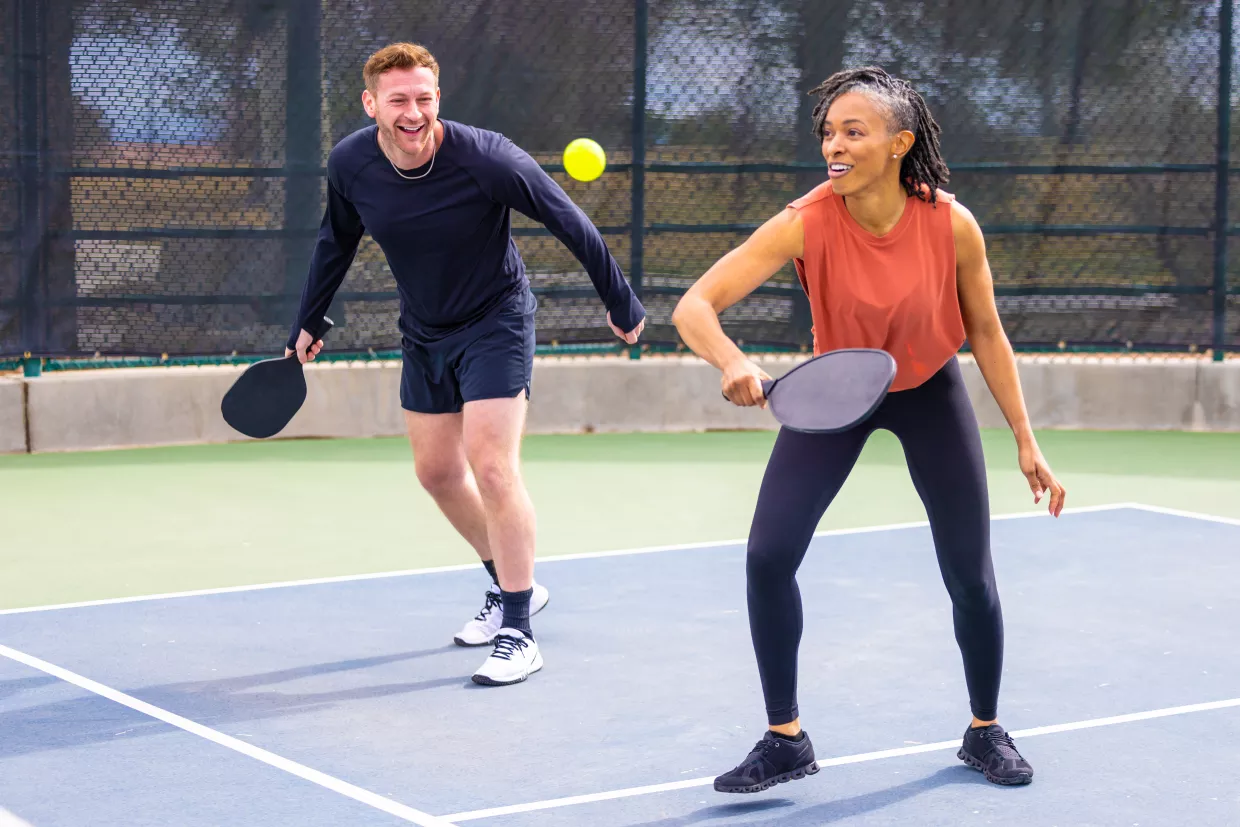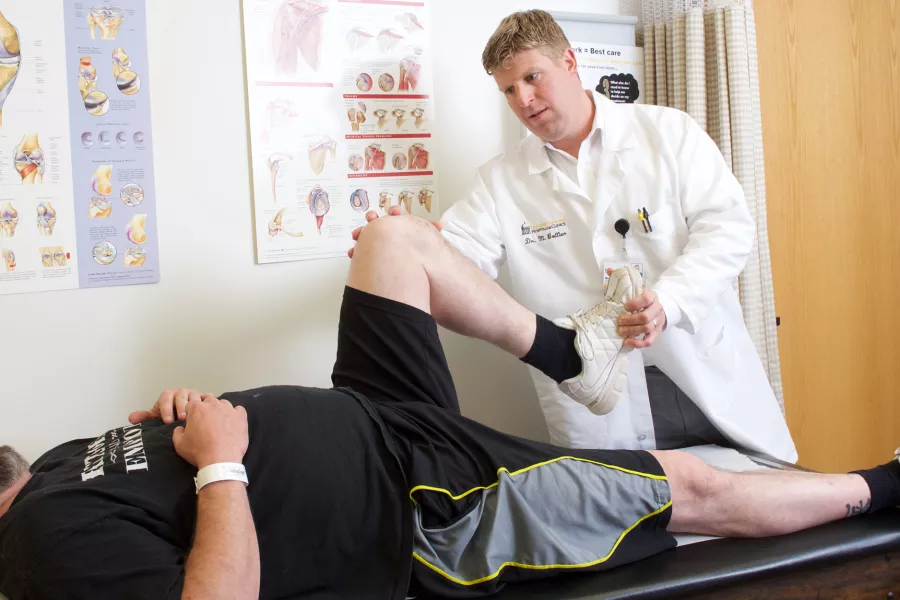Relishing the game: How to take up pickleball without hurting your joints
Pickleball, one of America’s fastest-growing sports, can take a toll on joints. Avoid an injury with expert tips.

Few sports have exploded nationally like pickleball, a unique blend of tennis, badminton, and Ping-Pong that attracted nearly 14 million players in 2023—a 52% jump from just the year before, according to USA Pickleball.
Despite its appeal, pickleball can take a toll on joints, says Tyler Slayman, MD, a family medicine and sports medicine specialist with University of Iowa Health Care.
“Many forms of exercise can be intimidating, but pickleball has a nice accessibility to it,” Slayman says. “It’s fun, it’s growing, it’s exciting, and it can be as intense as you want. But don’t let possible joint problems stop you from taking up pickleball. The human body was made to move.”

See a sports medicine specialist
Whether treating weekend warriors or elite athletes, we have the expertise to treat any sports-related ailment.
The most vulnerable joints
While any joint can get injured from pickleball—which is played on a 20-foot by 44-foot court—the elbows, knees, and ankles are particularly vulnerable.
Falls on the court can result in sprains or fractures, but these sudden events are the exception, not the rule. Similarly, an Achilles tendon could rupture in pickleball players whose prior physical activity consisted mainly of walking and aren’t accustomed to the sport’s explosive forward, backward, and side-to-side movements, Slayman says.
However, joint overuse injuries are far more prevalent due to the constant motion required to play the game with finesse.
“It’s the repetitive motion,” Slayman explains.
Like tennis elbow, pickleball elbow can develop when one of the large tendons in the joint becomes inflamed or irritated.
“In the racket hand, you’re doing the same motions, sometimes forcefully, in a way that’s not common during everyday life, like doing the dishes or laundry,” Slayman says.
How to protect your joints
It’s easy to be drawn to pickleball’s charm, especially because the social nature of the game encourages spending time with friends, Slayman says. But pickleball beginners who were previously inactive should be cautious about playing it many days a week or for many hours at a time.
“Folks who were more sedentary will be at higher injury risk,” Slayman says. “Start playing pickleball in a gradual, progressive way. Rather than jumping in seven days a week for three hours at a time, start at twice a week for 30 to 45 minutes.”
Slayman offers these additional preventive strategies to avoid hurting your joints during pickleball:
“Don’t go from your car to playing right away,” he says. “Walk first or play a slow volley of pickleball to get warmed up.”
Dynamic stretches, such as walking lunges, high knees, or arm circles, can be more effective at preparing your muscles than static stretches that involve standing in one stretched pose.
Playing doubles rather than singles will “decrease the amount of space you need to cover on the court,” he says, protecting joints from overuse. Similarly, you and the opposing team can decide to play only a couple of games instead of five.
This will limit overhead movements that can be hard on your shoulders.
These movements can place stress on your elbows.
